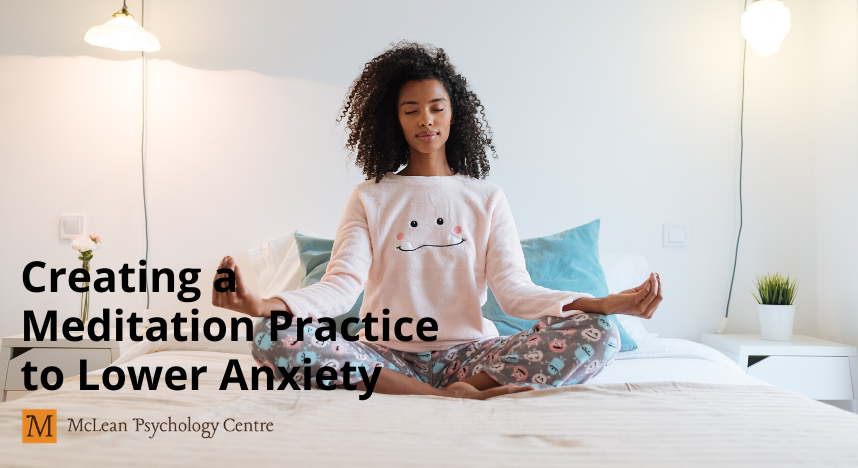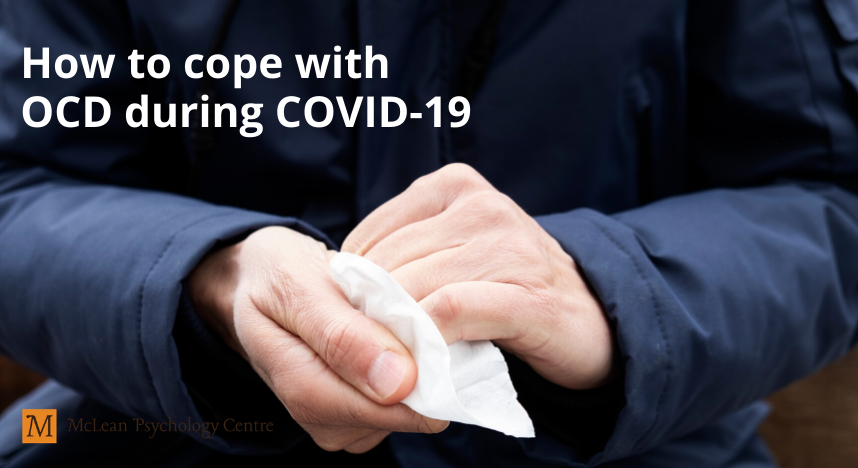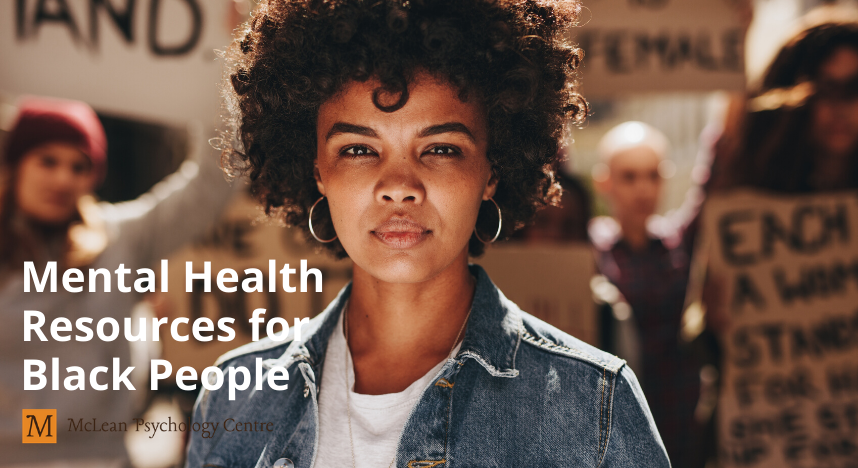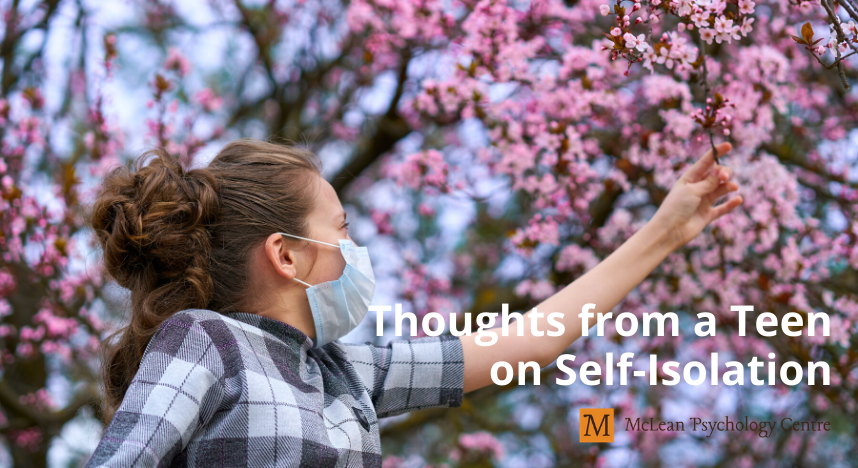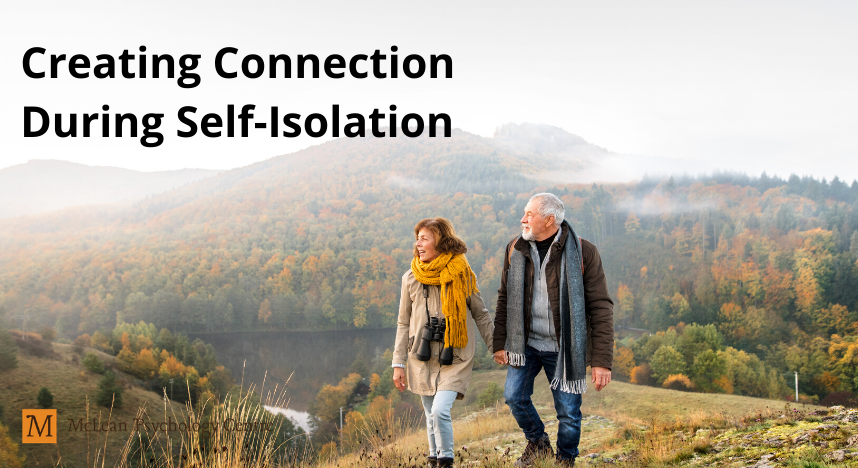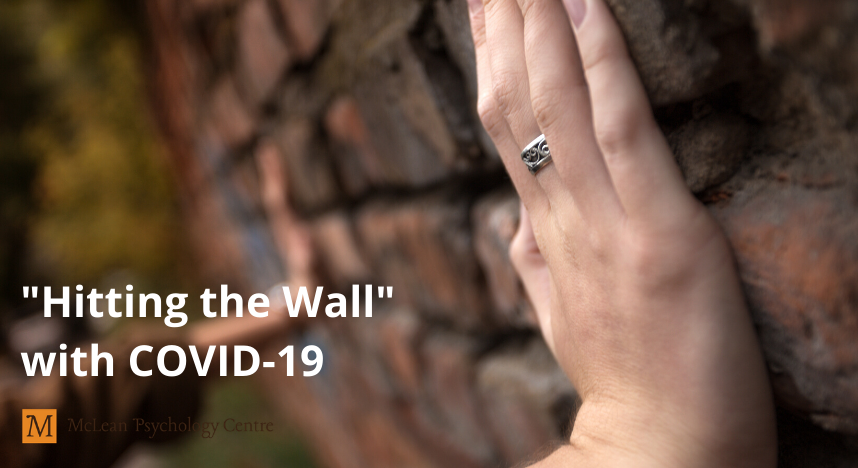Stress, anxiety, and depression can be difficult to manage at the best of times. Today, with the global novel coronavirus pandemic impacting lives across the globe, managing your feelings of stress and anxiety can be overwhelming.
One of the ways our clinicians help their clients manage their symptoms of stress and anxiety on their own is by encouraging them to create a meditation practice. Meditation is the act of sitting quietly, focusing on breath, and allowing your mind space to be calm and relaxed. Creating a meditation practice could be a key tool in helping you weather the major life changes brought on by COVID-19.
Mindfulness and meditation has been around for centuries. Certainly you have heard that meditation has many benefits, but there’s also a lot of research behind its positive effects, including the reduction of anxiety and depression. In 1979, Jon Kabat-Zinn founded the now world-renowned Mindfulness-Based Stress Reduction Clinic at the University of Massachusetts Medical School, where the majority of clinical study of the effects of mindfulness and meditation began. He has written many books and continues to do this work to this day, including daily free meditations on his website. (You can learn more about him here: https://www.mindfulnesscds.com/)
While this research is not from Dr. Kabat-Zinn’s body of work, here are some highlights from the compelling body of research advocating for the benefits of meditation and mindfulness.
- A study of 3,500 people showed that meditation was helpful in reducing stress and suggested psychologists recommend it as part of a treatment plan to their clients.
- Meditation has been shown to reduce the hormone cortisol, which is linked to inflammation, sleep disruption, depression and anxiety, increased blood pressure, fatigue and cloudy thinking
- Meditation has even been shown to help with attention span and mind wandering.
Aside from the research, people who regularly practice meditation say that mindfulness helps them savour the present moment. Mindfulness helps you to create an intentional calm in your life, which is something we don’t always have — especially right now.
Creating a Meditation Practice
Start small, but make a commitment
If you are just starting a meditation practice — or if you have tried before, but weren’t able to stick to it — the best way to start is small. Many people fail after trying to begin with 30 minute meditations.
Start with 2 minutes, but commit to doing it every day for one week at roughly the same time of day. After the first week, you can begin to add a minute every week until you reach an amount of time that feels good to you.
Find a quiet spot and sit comfortably
One of the best things about meditation is that there is no fancy equipment needed to do it! You just need yourself and a quiet place to sit. Grab a cushion and sit cross-legged on the floor or sit in your favourite chair with your feet planted on the floor. You only need to be sure that you are able to sit up straight and to be comfortable enough that you’re not distracted by being uncomfortable.
Focus on your breath
To begin, you can sit in silence or you can find meditation music on YouTube or your favourite music streaming service. Begin by closing your eyes and simply focusing on your breathing. If it helps you, you can mentally say the words, “Breathe in,” as you breathe in and, “Breathe out,” as you breathe out. It may also help you to put a hand over your stomach to feel the rise and fall of your breath.
If your mind wanders while you meditate, that’s totally okay! In fact, that’s normal. The key is to notice the thought but not get lost in it. When you notice that you are no longer focused on your breath, let the thought go and return your focus to your breath. Remember: it’s normal for your mind to wander, so don’t be hard on yourself!
Experiment with guided meditations
Feel free to experiment with guided meditations. These are meditations where a person’s voice will walk you through a meditation, asking you to visualize and change your breathing as they guide you. Many people find these meditations helpful when they begin, as it can be easier to calm your mind when you are focused on your guide’s voice. Search YouTube or your favourite streaming service for some great ones to try.
Use an app
There are a number of apps available that can help you create a meditation practice. These apps also allow you to discover different types of meditation in an easy way, so you can find the one that works best for you. Search “meditation” in your favourite app store and you’ll find lots of options that are both free and paid.
As you become more comfortable with your meditation practice, you can begin to expand it. Many people who begin meditating enjoy playing with different types and discovering what works best for them. Almost all of them report feeling calmer and less stressed after meditating even a short while.
With the world changing rapidly, it can be easy to get overwhelmed by feelings of stress, anxiety, and depression. Creating a meditation practice can be a tool to help you manage your symptoms. If you feel you need more support, we are here to help. You can begin by booking a consultation.

